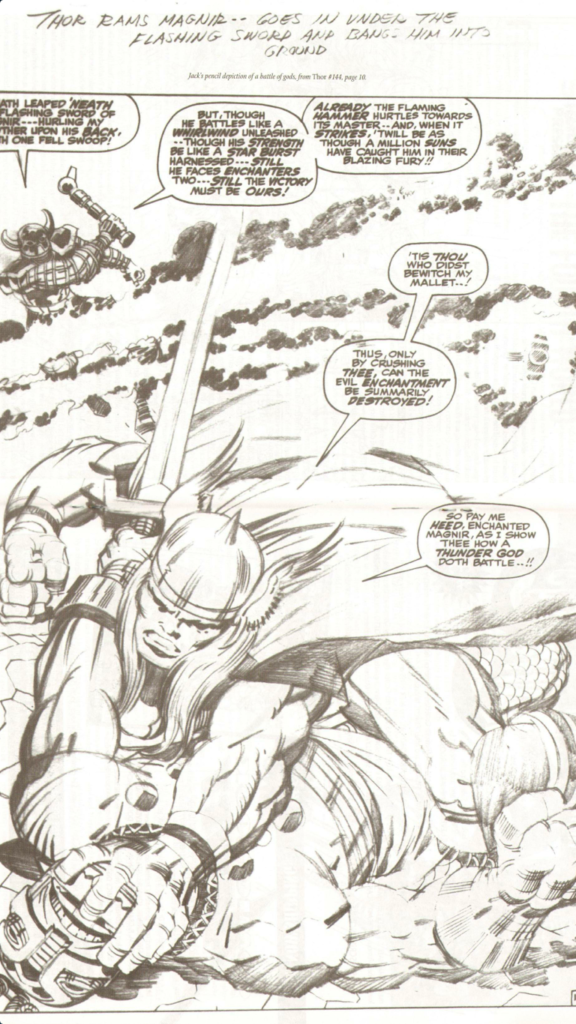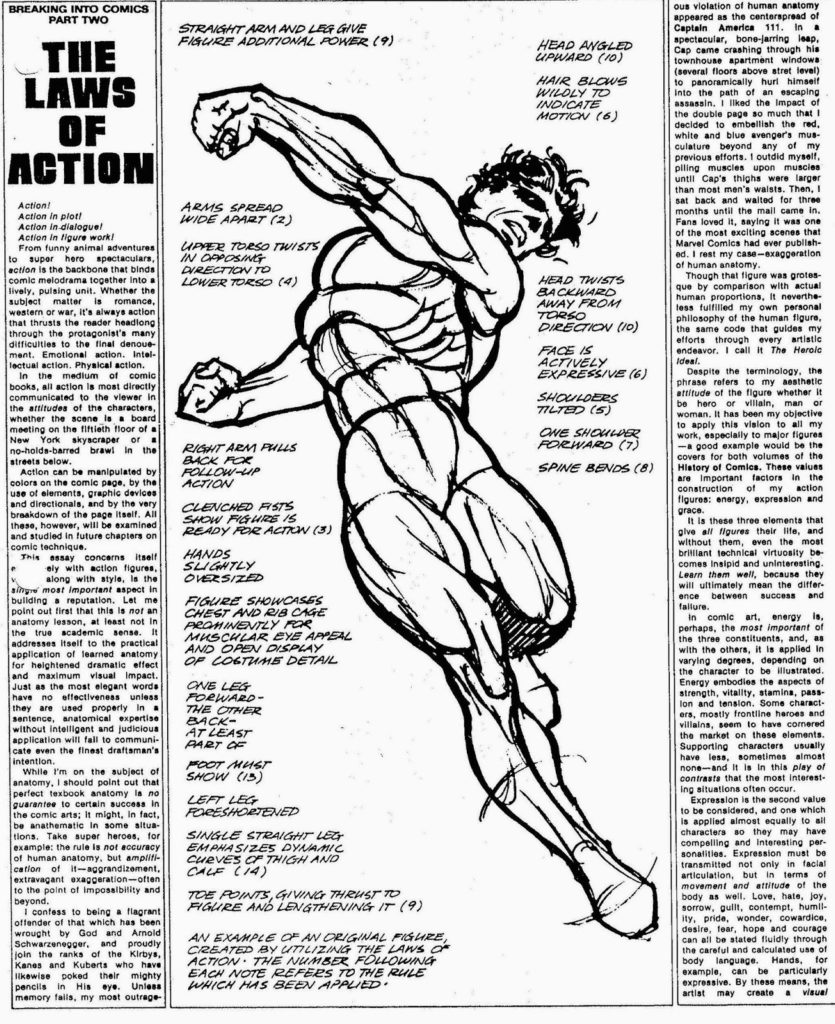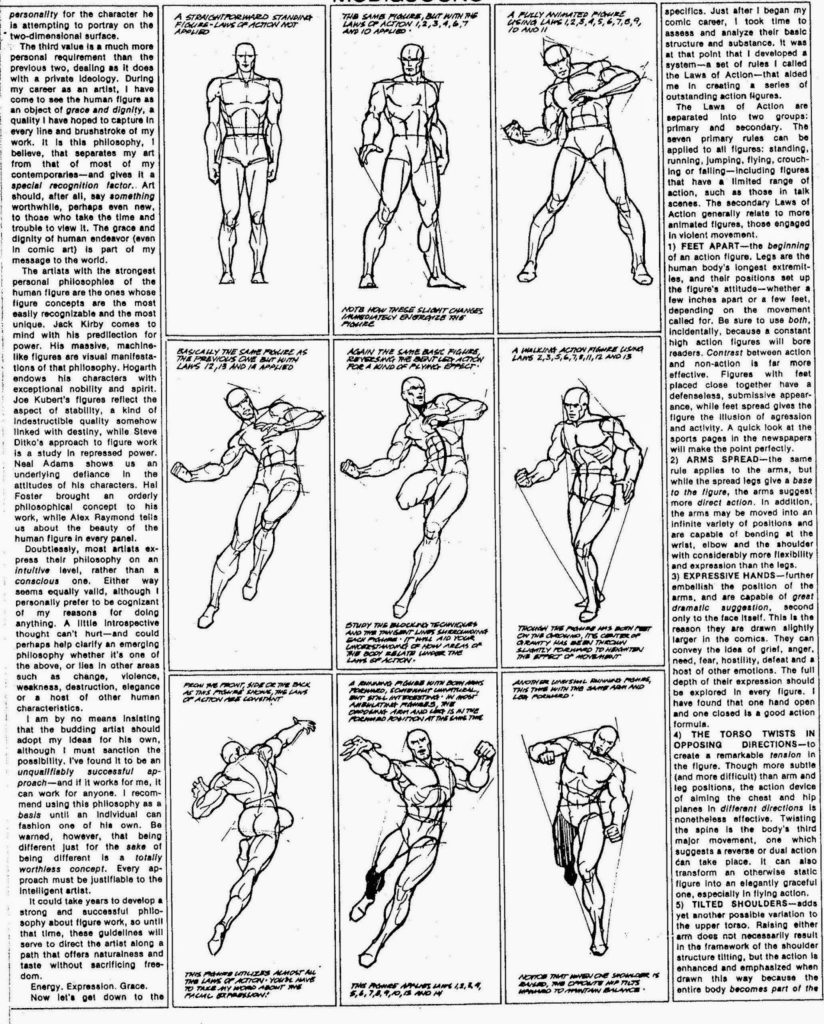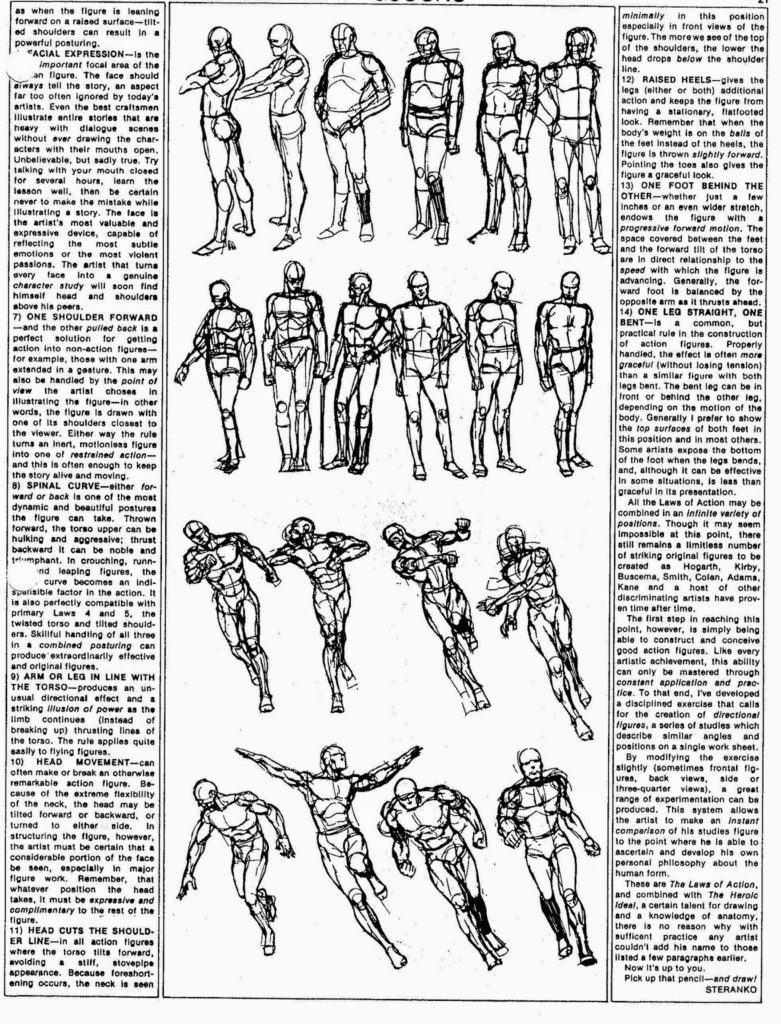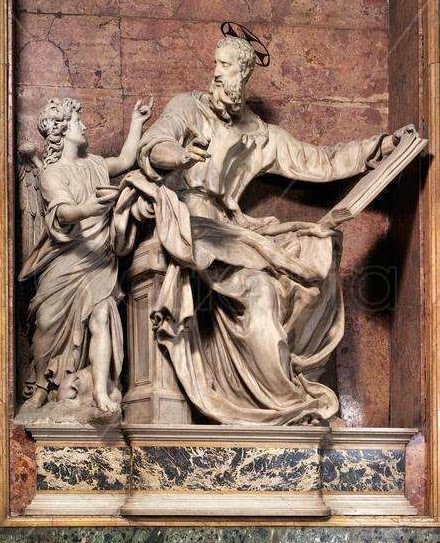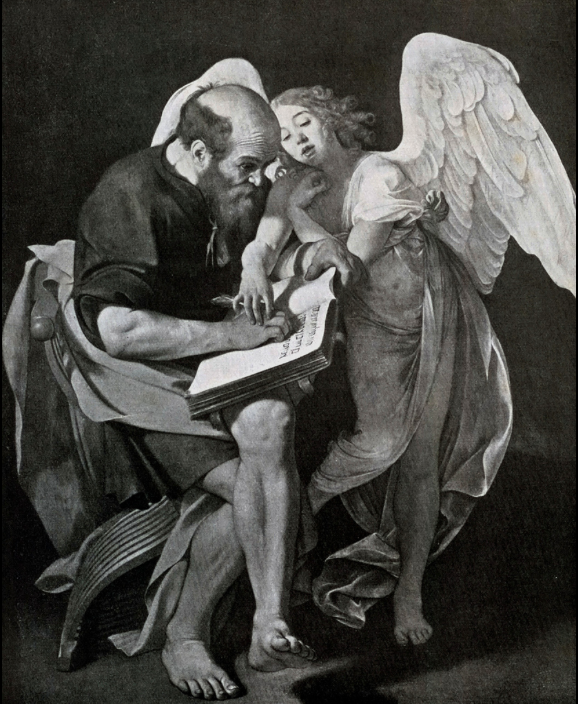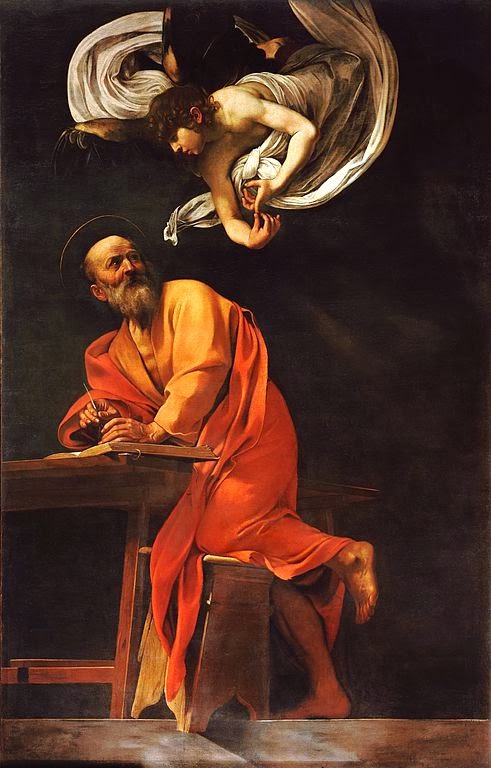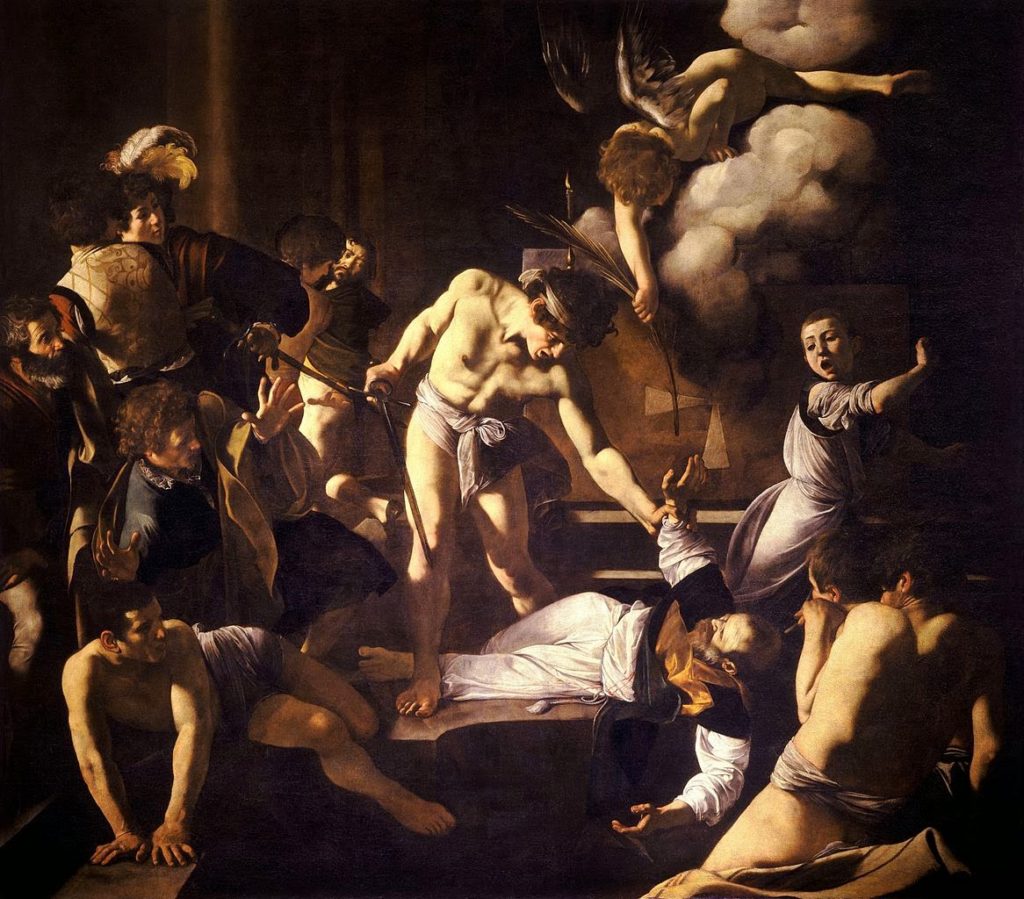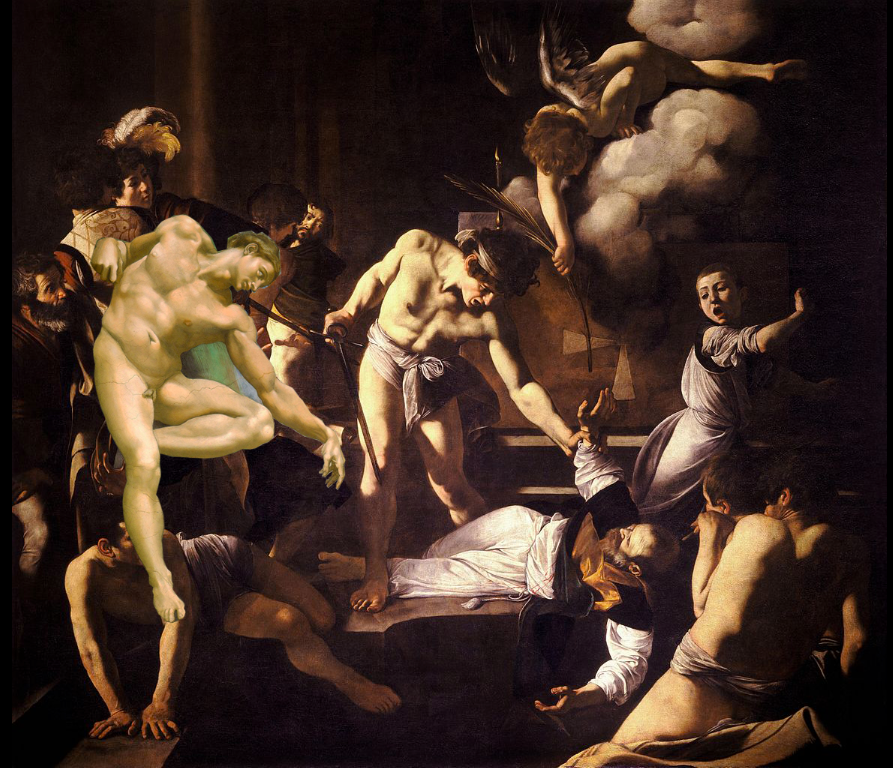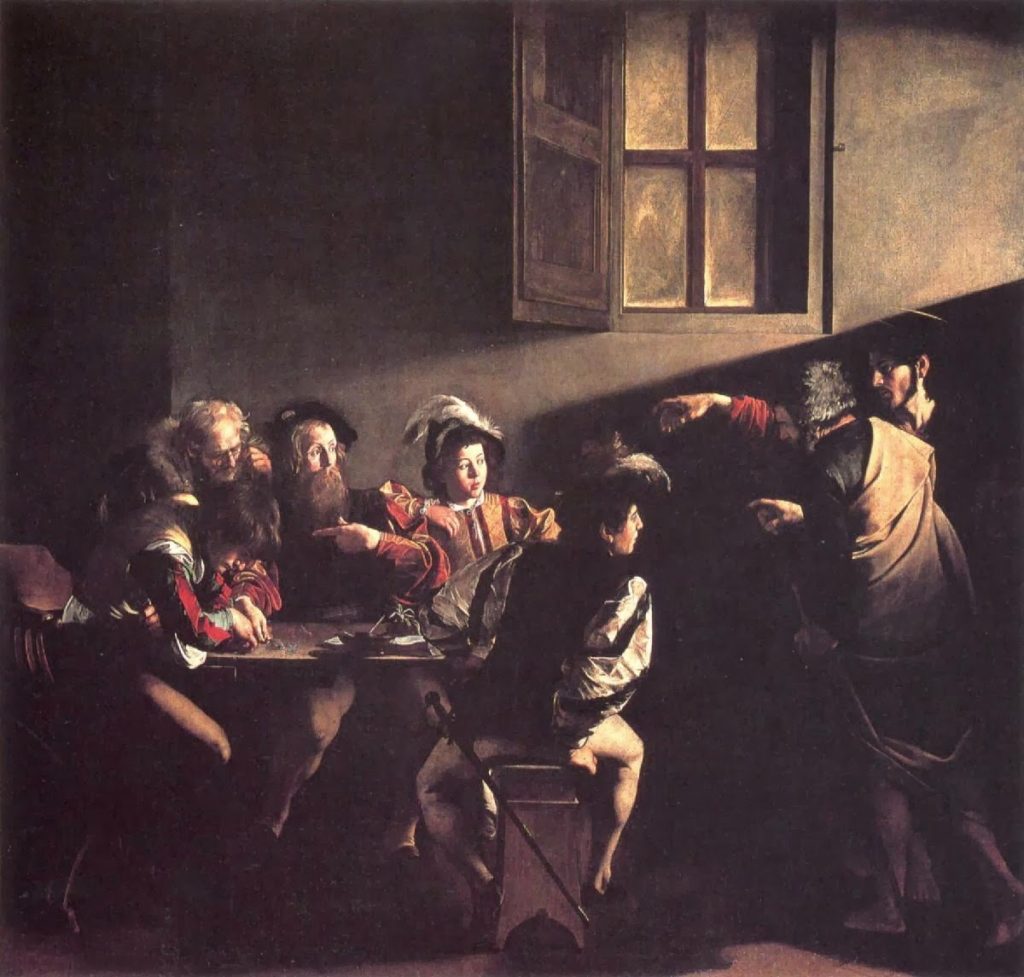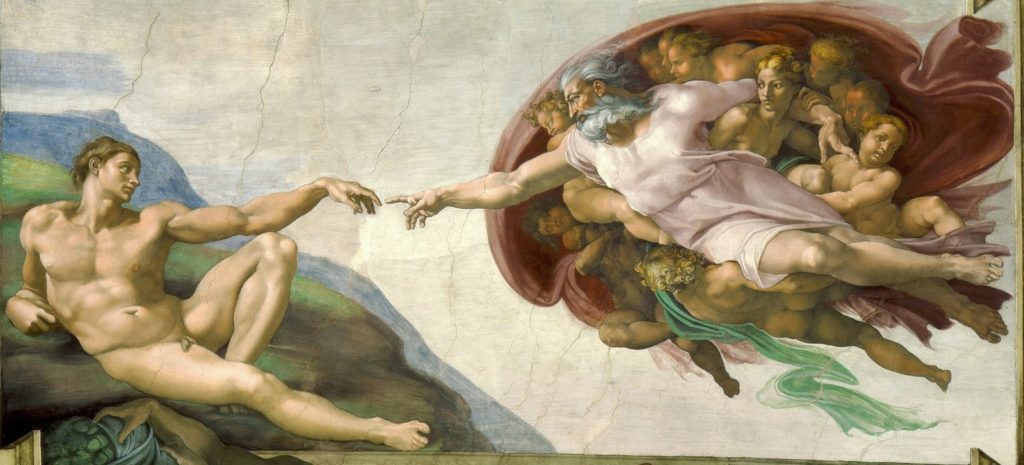Artistic Anatomy – Kirby, Steranko and the Laws of Action
For much of the 20th century, particularly in the dark days of the 60’s and 70’s, comic books were where much of the figurative tradition lived. Comic books are a great way to start of a series of posts on artistic anatomy considering that the simplification and distortion of anatomy is key to the art form.
The greatest comic artist of all time, Jack Kirby, is a example of an artist using artistic anatomy,
The Two Michelangelos: Postscript – Another Contarelli Chapel Commission
Caravaggio was contracted for two side paintings in the Contarelli chapel, those we have looked at in the last three posts. The project was finished and installed in 8 months. For the front wall of the chapel, the Flemish sculptor Jacob Cobaert was commissioned to complete a “St. Matthew and the Angel” which was rejected for unknown reasons a short while after being installed. The sculpture ended up in Santissima Trinita dei Pellegrini in Rome.
The Two Michelangelos Part 2
Legend . Matthew was murdered while celebrating mass in the Ethiopian city of Nadaber. He had refused to marry the King Hirtacua to Ephigenia, a consecrated virgin. Upset at this, the King sent an assassin to kill the saint.
kill him. At left we see a group of young men (including Carvaggio’s self portrait at the back) dressed in contemporary
17th C clothing (as in the “Calling”). This group could be the faithful who, upon witnessing the
murder, ran to light fire to the kings palace. On the right is the altar
boy running away from the scene while just behind him is the altar. The bottom group is somewhat confusing as it seems the figures are
distorted and/or limbless. Could this refer to the cripples that St. Matthew was
known for healing? The strange space they are in may be a reference to the Pool of Bethedusa – a healing
pool in Jerusalem mentioned in St. John’s Gospel.
It is the grouping of St Matthew and the assassin that is most interesting. Once again Caravaggio references Michelangelo’s Creation of Adam, using the body of
Adam in the place of the assassin. Below I have photoshopped Adam next to the assassin to demonstrate the similarity:
sinner and been exiled from Paradise. The assassin/Adam grabs the hand of Matthew,
trying to block contact with the palm of martyrdom being offered to him by the
angel above. Adam here is an image of arrogance in contrast to the redemptive power offered to Matthew. It is sin that prevents us from receiving the grace of God. In this grouping Caravaggio represents the complex rapport between human and divine.
With “The Calling of St. Matthew”, the hand of Adam became the
hand of Christ that calls Matthew. In “The Martyrdom”, the body of Adam just created becomes the arrogant body of the assassin of St. Matthew. The angel above Matthew is one of the angles from the flight of the angels within God the
Divine Creator.
In the next post we will see how Caravaggio continues to reference the Sistine Chapel in his painting of “Supper at Emmaus”
The Two Michelangelos Part 1
Buonarotti and Michelangelo Merisi da Caravaggio that is.
any master, understood art history and was able to play with the language
of art to make complex theological statements. A continual source for him was
Michelangelo and we find Caravaggio quoting the great master in many of his
paintings.
Chapel (1599 – 1600) in San Luigi Francesi in Rome, Caravaggio was granted his
first major commission. On
his death in 1585 the French cardinal, Matthieu Cointerel (Contarelli in
Italian) had left a large sum of money and instructions for a chapel to be
dedicated to his patron saint, St. Matthew. Caravaggio completed the commissions on canvas, something unheard of for large murals at that
time which were usually executed in fresco. Three large painting were finished in 8 months.
C wear. This emphasizes that Christ’s call is eternal, for all people
of all ages.
will look at the complex and interesting theology presented by
Caravaggio in a second painting in the chapel, “The Martyrdom of St. Matthew”.


